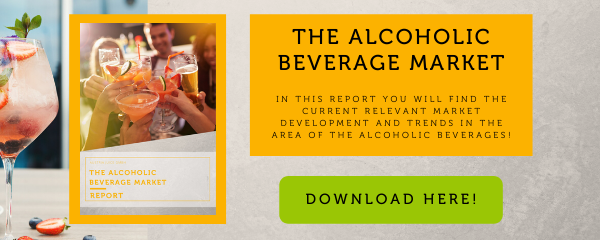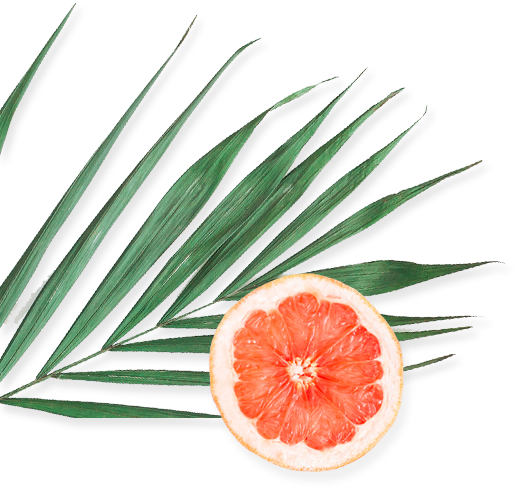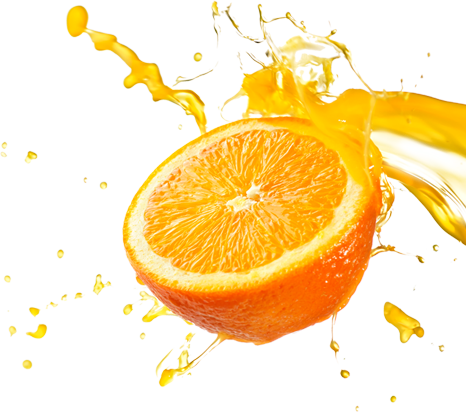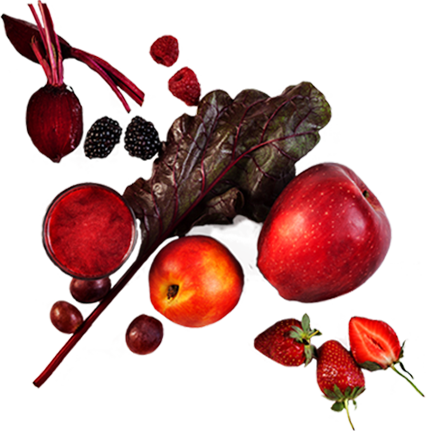
Beer meets tea: Premium products on the rise

Featured Posts
Categories
Interested in more? Subscribe to our blog.
As an accompanying beverage to hearty dishes, as a drink for chilled refreshment or as well as a central good at the Munich Oktoberfest and social events around the world, beer is a real institution. Today the traditional drink is available in countless variations - and with flavoured beer drinks in a completely new look: for example in combination with fruit juices, botanicals - or tea!
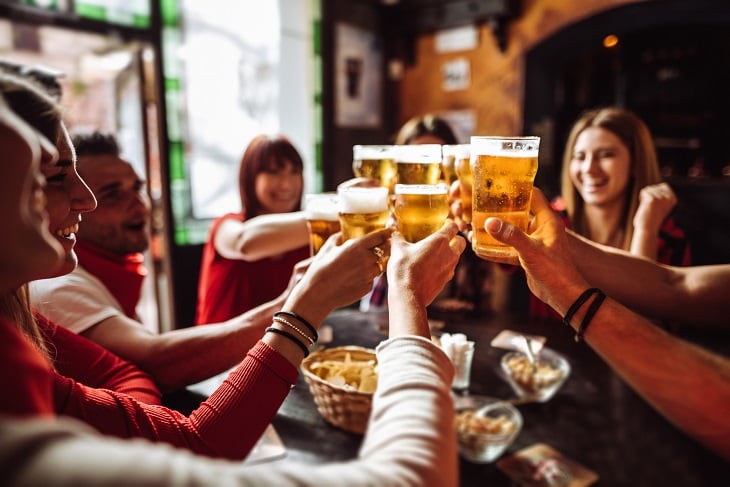
Beer is an evergreen on the beverage market, although you can take this literally: The origin of beer goes back to the early Neolithic period, making it one of the oldest and most consumed alcoholic beverages in the world. The global beer market size was estimated at US$605,246.1 million in 2020 and is expected to reach US$816,847.7 million by 2030, growing at a CAGR of 2.7% from 2021 to 2030.
Source: https://www.alliedmarketresearch.com/beer-market
In terms of volume, sales of mixed beer beverages also climbed continuously: In 1999, around 1,429,000 hectolitres of beer were still being served in Germany, while in 2021 the figure was already 4,376,000 hectolitres.
In terms of beer production, Germany ranks first in Europe with around 87,000 hectolitres in 2020. It is followed by Poland, Spain and the UK.
China is the country with the highest beer output globally, producing 341 million hectolitres, about 1.5 times the volume of the second-placed USA. The third largest producer country is Brazil with 152 million hectolitres. Germany comes in 5th place worldwide behind Mexico.
Source: Federal Statistical Office 2022, Statista.de (Barth-Bericht Hopfen 2020/21)
Premium beer mix drinks on the rise
Since the rise of craft beers, which are also produced with different styles and flavours in smaller companies, beer drinks have changed increasingly.
The consumer orientation, towards products that have as little negative impact as possible on the body, is also having an increasing effect in the beer segment.
In beer, for example, the consumer trend towards reducing alcohol consumption is unstoppable and it has become one of the most popular low-alcohol beverages.
The quality of the alcohol-reduced and non-alcoholic beers and flavoured beer drinks has improved quite a lot in terms of taste: While the first non-alcoholic creations often tasted rather watery and disappointing, the new product developments, thanks to new manufacturing processes and recipes, easily keep up with their alcoholic twins in terms of taste.
Beer also works without alcohol
A few years ago, however, alcohol-free beer was still a niche product. Today, the target group of his fans has grown significantly and is also widely diversified: More and more consumers, but above all the young and conscious millennials prefer this new beverage category.
More and more consumers - but above all the young and conscious millennials - prefer a light, healthy lifestyle. They want to avoid a hangover mood after partying and be focused and fully conscious for work, recreation and sports. In Spain, for example, 43 percent of consumers state that they have increasingly opted for alcohol-reduced or non-alcoholic beer since the Corona crisis. Nevertheless, they don't want to give up the taste and the feeling of leisure and party drinks such as beer and its new variants - and alcohol-reduced or non-alcoholic beer with a wide variety of flavours in flavoured beer drinks is just the thing!

Corona drove existing trends
Due to the Covid crisis, the lockdowns and the even greater awareness of maintaining health, 2020 was a global breakthrough year for non-alcoholic beer drinks and flavoured beer drinks, and Corona drove existing trends forward. The rapid growth of craft beer breweries was slowed, many even had to close, while the large global breweries recorded growth of five percent. The online trade in beer beverages and flavoured beer beverages made a step forward and there was an increasing tendency towards the purchase of larger packs of beer for domestic storage. According to Mintel, 15 percent of consumers in China bought beer on social ecommerce platforms in September 2020.
Eric Ottaway, CEO of Brooklyn Brewery, reports a 38 percent growth in reduced alcohol beer beverages this year and expects growth to increase more rapidly in 2021. In many European countries, non-alcoholic beer already accounts for five to ten percent of the market.
In the opposite trend, however, Corona also led to an increase in alcohol consumption for many people. For example, 28 percent of people who have already drank alcohol said that the pandemic made them drink more often. Mintel figures even point out a 60 percent increase in alcohol consumption in the United States since the pandemic.
Mintel experts estimate that beer and cider brands are increasingly becoming premium products as a result of Corona: In the "new normal" people will continue to consume at home more often and premium brands that put a focus on food pairing and innovative new products will be leading in the next two years. In addition, the “Better for you” variants of beer and cider products will set the tone.
The trend “less but better” will increasingly influence the beer market: sales of high-end products from large breweries rose significantly in 2020, according to Mintel.
Sources:
https://beveragedynamics.com/2021/01/19/craft-beer-trends-in-2021/
https://www.bevindustry.com/articles/93908-beer-report-beer-market-in-state-of-flux-as-consumer-preferences-change?
“The Future of Beer and Cider in 2021”, Jenny Zegler, Mintel 2021
“A year of innovation in beer and cider”, Mikolaj Kaczorowski, Mintel 2021
It is particularly noticeable how diverse the variety of flavours has developed in the beer and flavoured beer beverages segment. Globally this originally began with the creative craft beer variants from the small craft breweries. In addition to craft beer, various types of flavoured beers and mixed beer beverages have emerged. Craft beer and mixed beer beverages meet consumers' need for more and enhanced taste experiences.
Flavoured beer beverages on the way up
The category of mixed beer drinks is the perfect product extension for breweries to reach a broader customer base. Flavoured beer drinks are no longer limited to adding lemonade. They do not necessarily have to taste sweet but can also find their way into the market as a mixture of alcohol-reduced beer and exquisite flavouring, as well as beer with "flavoured water" instead of lemonade. Such flavoured beer drinks score with fewer calories than conventional beer or mixed beer drinks that are based on lemonade.
While Hard Seltzer has driven the alcohol trends of recent years, many craft brewers have also started production. It is expected that even more producers will focus on Hard Seltzer in 2021.
Source: https://beveragedynamics.com/2021/01/19/craft-beer-trends-in-2021/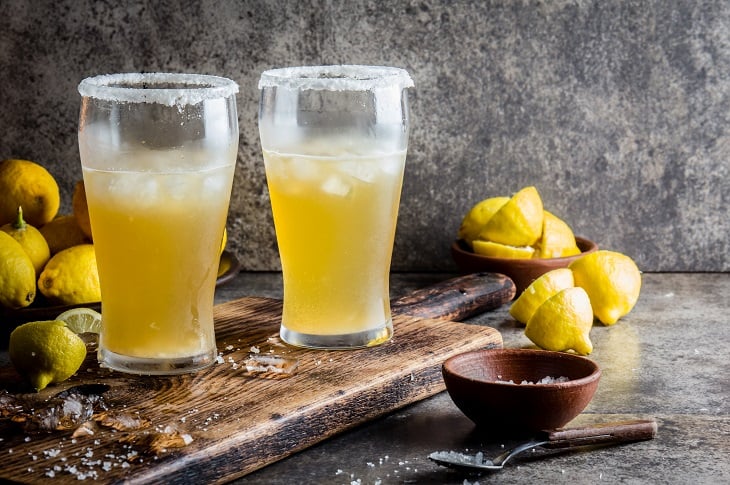
There is also a variety of exciting recipes for flavoured beer beverages. When it comes to flavours, in the central European markets lemon and lemonade, elderberry, lime, orange, grapefruit, raspberry, apple, herbs, ginger, mango, cola and berry mix are the classics. These variants with just one flavour component are now increasingly being followed by flavour combinations that are made up of a classic beer mix flavour such as citrus and a more exotic component such as pomegranate or a botanical note such as lavender and create new taste experiences.
Fruit juice and beer is indeed an attractive combination: according to Mintel, in 2020, 23 percent of consumers in the UK said they had drunk fruit-flavoured beer in the past few months, compared to 51 percent in India. 29 percent of Canadians say they are interested in this type of mixed beer drink.
At AUSTRIA JUICE, the fruity equivalent of pure beer comes with a diverse portfolio - including herbal lemonade, rosehip wheat, gooseberry wheat, cherry, malt, sour cherry, grapefruit wheat, raspberry and many more creations.
Tea as a rising star in mixed beer drinks
In addition to fruity versions, however, another component for mixed beer drinks is on the rise: Tea!
Tea brings further benefits: it closes the gap in mixed drinks when it comes to not producing end creations that are too sweet. Those who prefer tart flavours will get their money's worth with recipes made from beer and tea. The demand is there: 47 percent of German customers who had drunk beer in 2020 in the past three months think that most mixed beer drinks are too sweet.
Another plus for tea in beer mix drinks is that it can be optimally combined with other botanicals - for example, herbs, spices or floral aromas such as hibiscus, elderberry, basil or lavender.
Source: "It's time for Tea in Beer and Cider", Jenny Zegler, Mintel 2021
The beer mix drinks with natural herbal flavourings and tea extracts developed by AUSTRIA JUICE are the perfect combination to tap into new customer groups and meet the consumer trend for variety and alternatives to conventional beer.
For example, the product portfolio offers beer mix drinks with green tea, which are convincing as variants with lime, mint & hemp or with lemon & mint. Beverage producers can also show their innovative side through concepts with herbal flavours and are on trend with AUSTRIA JUICE developments such as Thyme Radler or Sage Radler.
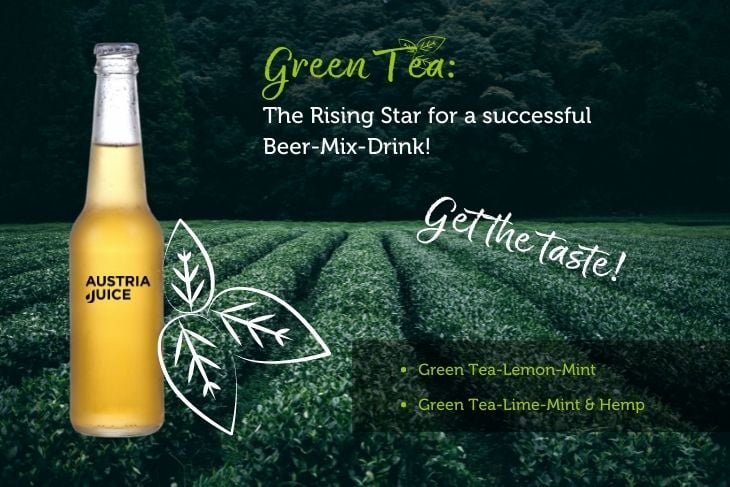
Alcohol-free flavoured beer beverages with asset for the body
In 2021, more and more mixed beer beverages will be enriched with nutritive substances: Have you ever heard of protein or vitamin beer? In the future, we will certainly come across these product innovations more often – the first variants are already on the market. Isotonicity and vitamin contents are important to many consumers, complemented by an enriched mineral content. In the future, more emphasis will be placed on the ingredients - the focus will also be on the natural origin of all ingredients.
The wide variety of functional product applications from AUSTRIA JUICE makes it possible to create individual beverage concepts that meet all requirements. In the case of beer mix drinks with proteins, non-alcoholic shandy was developed, which is available with a fruity yuzu flavour or as a pomegranate-cranberry-citrus variant.
CONCLUSION:
A revolution has taken place on the global beer market in recent years that will continue: Craft beer, flavoured beer and mixed beer drinks are on the rise in different tastes and types. Mixed beer beverages with flavours or blended with flavoured water pick up on the trend towards reducing alcohol and consumers' need for enhanced taste experiences. They score with fewer calories than a conventional beer or a mixed beer drink made from beer and lemonade. A novelty on the beer market are mixed beer drinks, which are enriched with protein, vitamins and minerals! And experts see great potential in beer-mixed drinks created with tea: Breweries can use them to expand their portfolio and customer group. The taste experience with tea or herbs is less sweet and fruity than variants with fruit juice, but will thus especially delight those consumers who prefer herbal and citrus flavours.

Julia WurzerAuthor
Marketing Manager
